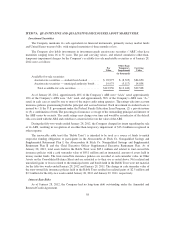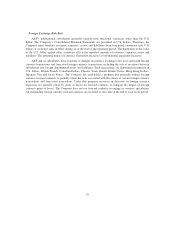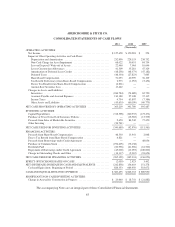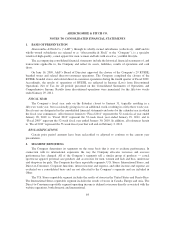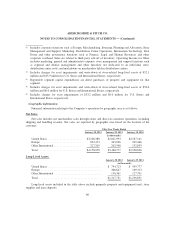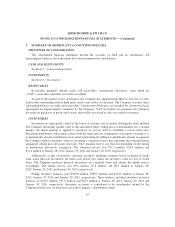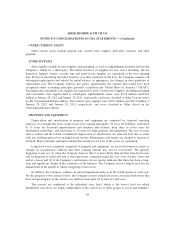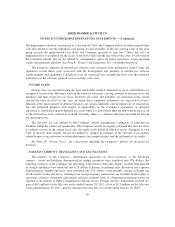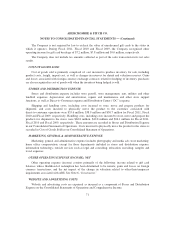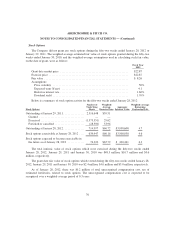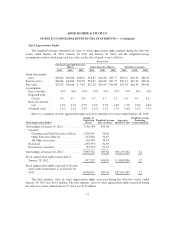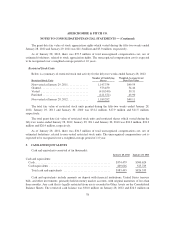Abercrombie & Fitch 2011 Annual Report Download - page 71
Download and view the complete annual report
Please find page 71 of the 2011 Abercrombie & Fitch annual report below. You can navigate through the pages in the report by either clicking on the pages listed below, or by using the keyword search tool below to find specific information within the annual report.ABERCROMBIE & FITCH CO.
NOTES TO CONSOLIDATED FINANCIAL STATEMENTS — (Continued)
OTHER CURRENT ASSETS
Other current assets include prepaid rent, current store supplies, derivative contracts and other
prepaids.
STORE SUPPLIES
Store supplies include in-store supplies and packaging, as well as replenishment inventory held on the
Company’s behalf by a third party. The initial inventory of supplies for new stores including, but not
limited to, hangers, frames, security tags and point-of-sale supplies are capitalized at the store opening
date. In lieu of amortizing the initial balances over their estimated useful lives, the Company expenses all
subsequent replacements and adjusts the initial balance, as appropriate, for changes in store quantities or
replacement cost. The Company believes this policy approximates the expense that would have been
recognized under accounting principles generally accepted in the United States of America (“GAAP”).
Packaging and consumable store supplies are expensed as used. Current store supplies, including packaging
and consumable store supplies held at a third-party replenishment center, were $17.8 million and $20.6
million at January 28, 2012 and January 29, 2011, respectively, and were classified as Other Current Assets
on the Consolidated Balance Sheets. Non-current store supplies were $32.0 million and $32.3 million at
January 28, 2012 and January 29, 2011, respectively, and were classified as Other Assets on the
Consolidated Balance Sheets.
PROPERTY AND EQUIPMENT
Depreciation and amortization of property and equipment are computed for financial reporting
purposes on a straight-line basis, using service lives ranging principally: 30 years for buildings; from three
to 15 years for leasehold improvements and furniture and fixtures; from three to seven years for
information technology; and from three to 20 years for other property and equipment. The cost of assets
sold or retired and the related accumulated depreciation or amortization are removed from the accounts
with any resulting gain or loss included in net income. Maintenance and repairs are charged to expense as
incurred. Major remodels and improvements that extend service lives of the assets are capitalized.
Long-lived assets, primarily comprised of property and equipment, are reviewed whenever events or
changes in circumstances indicate that their carrying amount may not be recoverable. The primary
triggering events are (1) when the Company believes that it is more likely than not that long-lived assets
will be disposed of before the end of their previously estimated useful life (e.g. store closures before the
end of a lease) and (2) if the Company’s performance in any quarter indicates that there has been a long-
term and significant change in the economics of the business. The Company reviews long-lived assets for
impairments in the quarter in which a triggering event occurs.
In addition, the Company conducts an annual impairment analysis in the fourth quarter of each year.
For the purposes of the annual review, the Company reviews long-lived assets associated with stores that
have an operating loss in the current year and have been open for at least two full years.
The reviews are conducted at the individual store level, which is the lowest level for which
identifiable cash flows are largely independent of the cash flows of other groups of assets and liabilities.
68


